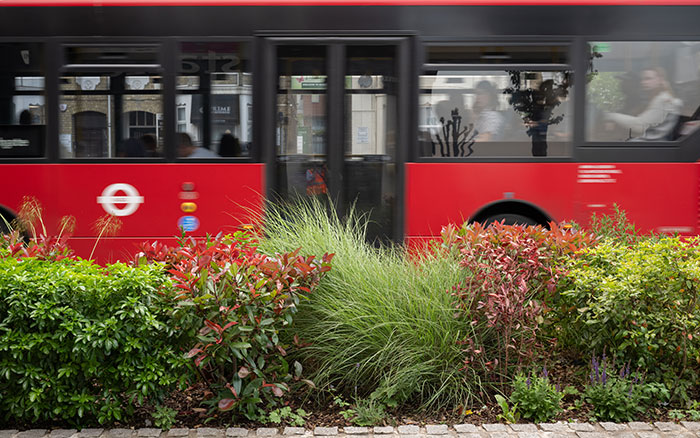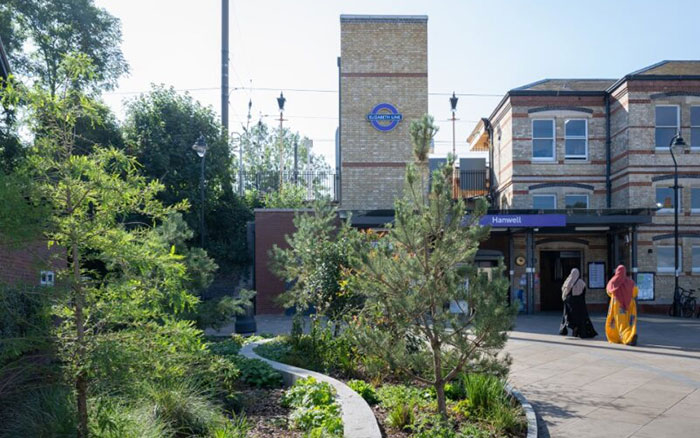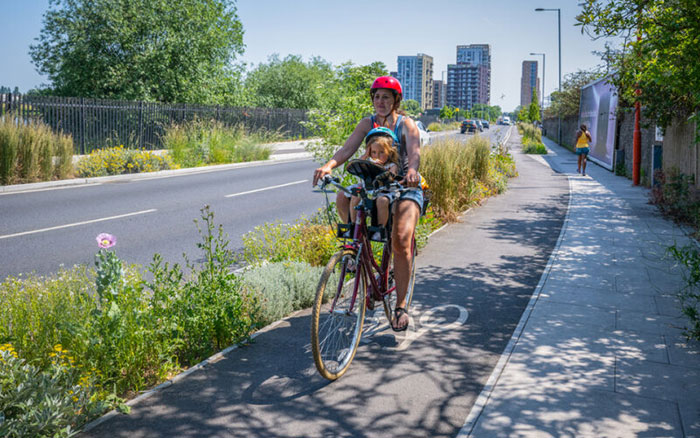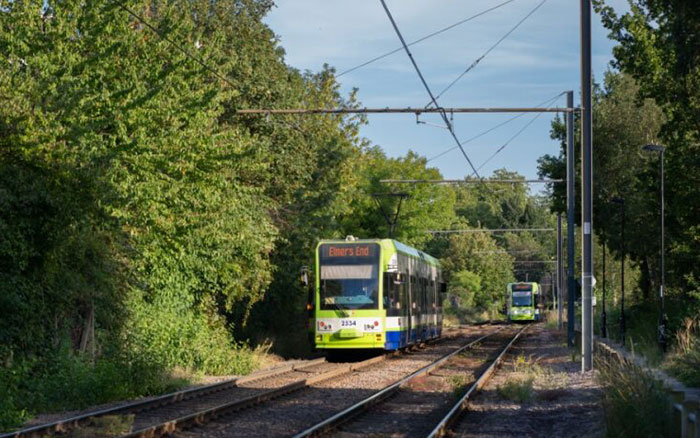Green infrastructure & biodiversity
Green Infrastructure and Biodiversity Plan
Our first Green Infrastructure and Biodiversity plan sets out how we will protect, connect and enhance our green infrastructure and biodiversity while maintaining our safety standards and service reliability.
It captures in one place our existing legal requirements, as well as commitments in the Mayor's Transport Strategy and our Corporate Environment Plan. It also identifies challenges and opportunities, and outlines how we will promote best practice and raise awareness of the importance of green infrastructure and biodiversity.
Our video explains the multiple benefits of green infrastructure.
Our green infrastructure
London's green infrastructure is its network of parks, green spaces, gardens, woodlands, rivers and wetlands, as well as features such as street trees and green roofs across the city.
Our estate:
- Comprises more than 2,300 hectares of land - almost a third of this is green
- Supports more than 1,000 animal species and almost 700 plant species
- Intersects with many different designated sites.
Healthy green infrastructure benefits both wildlife and people. For example, it provides shade and shelter, improves air quality and reduces surface water flood risk. Walking and cycling are encouraged and our well-being enhanced when the way the city looks and feels improves.
Natural capital account
A natural capital account is one way to measure and value natural assets and the benefits they provide, such as supporting biodiversity, helping to manage flooding and cooling the city.
TfL was the first transport authority in the UK to develop a natural capital account at the estate level and to the high standards of the Natural Capital Protocol and the Natural Capital Accounting for Organizations (BS 8632:2021).
TfL's baseline natural capital account highlights how our green infrastructure contributes to making London greener, healthier and more attractive to visit, work and live in.
Biodiversity net gain
To support our biodiversity net gain commitment, as set out in the Mayor's Transport Strategy, we were the first transport authority in the country to use aerial imagery for a biodiversity baseline mapping project on a city-wide scale.
We also worked with key London stakeholders, such as the boroughs and wildlife charities, to agree an innovative way to assess local wildlife sites (known as Sites of Importance for Nature Conservation) for their biodiversity potential. This is helping to guide the way we meet our legal requirements for biodiversity net gain under the Environment Act 2021.
Wildflower verges and other grassland
Wildflower verges are simply road verges with a different maintenance regime aimed at increasing biodiversity. Changing the frequency and timing of mowing allows wildflowers to bloom and set seed, giving pollinating insects and other wildlife valuable habitat and foraging resources.
Since 2019, we've expanded our wildflower verges by 7.4 hectares to almost 13 hectares. and will increase this to 26 hectares in 2024. We also work with boroughs and others to share knowledge on different ways of managing wildflower verges. See what we're doing to manage road verges for wildlife.
Trees and canopy cover
On our estate we have:
- Almost 25,000 street trees
- A total of 113 hectares of roadside woodland
- Approximately 20% canopy cover
We are on track to meet the Mayor's Transport Strategy target to increase street tree numbers by 1% per year until 2025. To reduce the impact on safety and maximise the benefits of our trees to London, our maintenance and planting efforts must follow the principle of 'right place, right tree and right care'.
Sustainable Drainage Systems (SuDS)
SuDS are measures that help to reduce the amount and/or slow the flow of rainwater reaching London's overburdened drainage networks. This is crucial in a changing climate as London experiences more frequent and more extreme rainfall events.
- Our Climate Change Adaptation Plan sets a target to deliver an additional 5,000 square metres of catchment draining into highways' SuDS each year. We're on track to meet this for 2023/24
- Examples of TfL SuDS schemes are the rain gardens at Elspeth Road in Wandsworth and at Rotherhithe and Old Street roundabouts
Green roofs
We have several extensive green roofs across our estate that provide biodiversity, energy efficiency and insulation benefits, such as at Ruislip depot, West Ham bus garage and Old Street station.
We also have new green roofs planned at Cockfosters depot and as part of our property development portfolio and estate refurbishment works.
Working with partners
We work with many kinds of organisations to increase and enhance the green infrastructure on our network and across London.
This includes:
- Borough projects to embed green infrastructure and climate resilience measures
- Creating new green spaces, building routes to them on local roads through Local Implementation Plans and the Healthy Streets programme
- Sharing our approach to timing and reducing mowing on roadside verges.
How we manage our green infrastructure
Removing trees and vegetation
Our main focus when managing our green infrastructure is on safety - for our customers, neighbours, staff and contractors.
Our arboriculturists assess the condition of our trees every year. Based on their findings, we:
- Remove trees if they are dead or diseased before they can fall and disrupt services, damage property or harm people. Replacement trees will be planted where appropriate
- Remove trees where subsidence has been proven and it's necessary to protect property or embankments from further damage
- Prune vegetation that prevents drivers, cyclists or people walking from using the highway or track
- Reduce the risk of fire by regularly clearing dry vegetation from rails and trackside areas
We also explore opportunities to create and enhance green infrastructure as part of our projects and maintenance activities.
Use of herbicides
Non-native invasive species and pests can cause a lot of damage to our green infrastructure, transport infrastructure and health. For example, Japanese knotweed can damage structures like walls and roads.
We use several different methods (chemical and mechanical) to deal with weeds and non-native invasive species.
We make sure that we follow the legislation and Government guidelines that apply to any method we use, and we also actively look for ways to further reduce our use of herbicides.
Working with our neighbours
We write to our neighbours if we're cutting down trees nearby and the work will take three or more nights. This includes work that may need to take place immediately to address safety issues found during a visit.
We're not required to consult or get planning permission before cutting down a potentially dangerous tree within the boundary of London Underground property.





